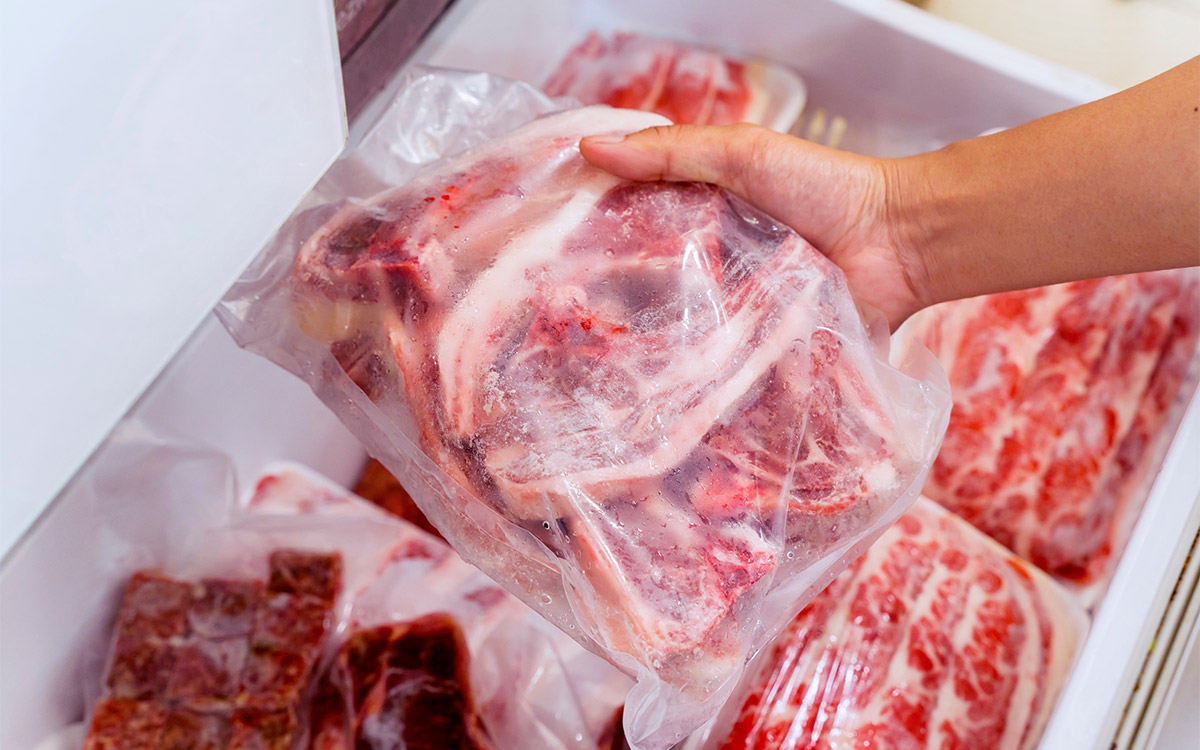It’s happened to all of us: You ask a family member to take the meat out of the freezer in the morning, but when you come home at 5 p.m., you find the meat still in the freezer. Keeping your freezer stocked with frozen beef, steaks, and even organ meat is always a good idea, but what happens when dinner is in an hour, and you need to quick-thaw? We’ve got your back. Knowing how to thaw ground beef and more—fast— is important so you don’t sacrifice flavor, tenderness, or taste!
Why You Need to Thaw Meat Safely
Meat that’s vacuum-sealed, flash-frozen, and shipped is much fresher than the unfrozen steaks you see at the store and gives you the longest possible shelf life. But as soon as the meat begins to thaw and the internal temperature goes above 40 degrees, bacteria that may have been present before freezing begins to multiply. Thawing meat safely is important to prevent foodborne illnesses caused by E. Coli, Salmonella, and Campylobacter.
How to Thaw Ground Beef, Steak, and Organ Meat Fast
There are three safe ways to defrost meat: in the fridge, in cold water, and in the microwave. The refrigerator is the safest and most recommended method, but if you are in a rush, cold water or microwave will work. With these tips and tricks, you’ll thaw meat safely and in time for dinner.
Refrigerator (10 to 24 hours)
Thawing frozen meat in the refrigerator is the safest and most convenient method but also the slowest. Stew meat, ground beef, and steaks defrost within a day, whereas bone-in and whole roasts can take up to two days. To thaw meat in the refrigerator, remove it from the freezer and place it in a container or dish on the fridge’s bottom shelf to prevent dripping and cross-contamination. The meat is safe in the refrigerator for three to five days. If you decide not to use the beef during this time, you can still safely refreeze it.
Cold Water (30 minutes to 1 hour)
You have one hour until dinner time and a pound of frozen ground beef in your hands. What do you do? Defrost the meat in a bowl of cold water. First, ensure the frozen meat is sealed in leak-proof packaging, if it’s not, wrap the meat tightly in a resealable plastic bag, then submerge it in a bowl of cold tap water. Change the water every 30 minutes to ensure it stays cold and continues to thaw the meat. Foods thawed with cold water should be cooked immediately before consuming or refreezing.
Microwave (5 to 10 minutes)
Thawing in the microwave is the quickest method and is the go-to for many in a hurry. Open the package of ground beef, steak, organ meat, etc., and transfer it to a suitable-sized bowl or shallow dish. Put the bowl in the microwave and push the defrost button, or manually set your microwave to 50% power. Defrost for eight to ten minutes per pound, flipping the meat every few minutes until thawed. Some of the meat may have started to cook during defrosting, which is safe, but make sure you cook the meat immediately after thawing.
Now You Know How to Thaw Ground Beef—That’s a Job Well Done.
Thawing meat quickly can be a convenient solution when you’re short on time, but it’s important to do so safely to avoid the risk of bacterial growth or foodborne illness.The refrigerator, cold water, and microwave methods will come in handy as the summer grilling season approaches. At Oreganic, we ship to Oregon, Washington, Idaho, Nevada, and California, so now’s the time to stock up your freezer for those delicious summer dinners!


